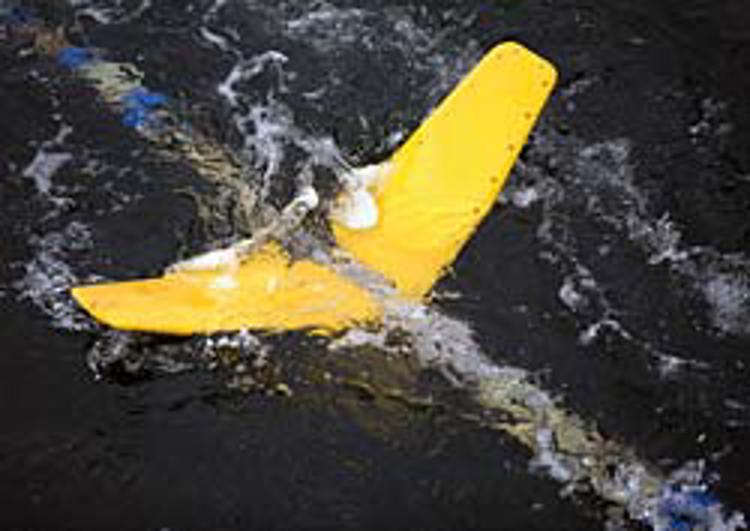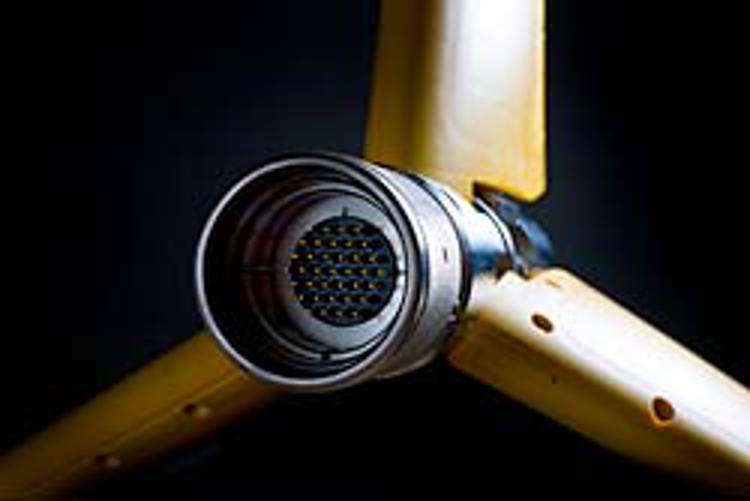eBird: Wings under water
EBIRD: eBird is a development from Kongsberg Seatex - a product which allows control of the world's largest, man-made, movable objects.
Oil exploration involves making use of sound waves to investigate the layers of rock under the seabed. The sound waves are generated by a type of air gun which fires an acoustic pulse at short intervals. The reflection sent back from the seabed is analysed and the results provide information on structures where oil and gas can be found," explains Arne Rinnan, CTO with Kongsberg Seatex, the company behind the innovative eBird.
"However, the reflected sound waves are extremely weak signals and you need very high quality microphones to capture these signals."

eBird® lateral, vertical and roll control of seismic cables.

eBird® is equipped with robust and advanced steering devices ensuring continuous operation for all types of streaming cable.
"How does that work?"
"We use long cables fitted with microphones, or hydrophones as they are called. First of all, a seismic boat trails air guns which fire off acoustic impulses. Then a number of seismic cables with hydrophones are used to capture the sound waves."
"And these seismic cables are difficult to control?"
"That's right. Most people think that when you trail a cable through water, it travels in a straight line. But because of current and turbulence, this is not the case. In principal, you can control the depth of the cables and that is very important. However, it's mostly preferable to use several cables – or streamers – and then they should be as parallel as possible. To achieve that, you have to have full control over the lateral movements of the cables. This is what eBird was developed to do – to control both the vertical and horizontal movement of the cables."
"Is it like a tiny submarine?"
"I suppose you could say so, only that it is attached to the streamer. It is made up of a body with three wings, and the body is included as a joining piece in the streamer, preferably one for every 300 metres of cable. A seismic streamer can reach lengths of up to 12 km, and the largest trails can comprise more than 15 parallel streamers."
"It would be a real mess if they all got tangled together?"
"Absolutely. And there you have the perfect argument for using eBird. It gives you much more operational control over the streamers."
"So by having the streamers as parallel as possible provides more accurate readings. Why is that?"
"The hydrophones are fitted tightly together along the streamer. However, if there is too much distance between two streamers, there will be areas with poor readings. These readings have an extremely high requirement on sensitivity. The streamers are often at distances of 50 to 100 metres from each other. So an entire spread, as we call it, can quickly be 1.5 km wide on the largest boats."
"And with lengths of up to 12 km, we're talking about a huge area."
"That's right. We're actually dealing with the largest man-made movable object ever."
"The seismic boat pulls the spread through the water while somebody sits and monitors the eBirds which in turn make sure that the streamers remain as parallel as possible?"
"That's right. However, the eBirds are intelligent and they have been pre-programmed to stay at a certain depth. The operators can then send them commands regarding lateral movement. The actual body of the eBird forms part of the streamer. This means that there is no turbulence around the bodies, which in turn means that they do not generate acoustic noise. What's more, they are equipped with three wings allowing us to move them in any direction we want without having to rotate. When an aircraft turns, it has to bank over to one side. But if it had three wings, this wouldn't be necessary. We've also added another smart feature."
"What's that?"
"We've exploited the fact that there was some space left inside the actual wings. We fitted an engine, battery, sensors and electronics there, allowing us to keep the body of the eBird very slim. The wings can also be removed very simply, even when in the sea. We have already been awarded a number of patents for eBird."